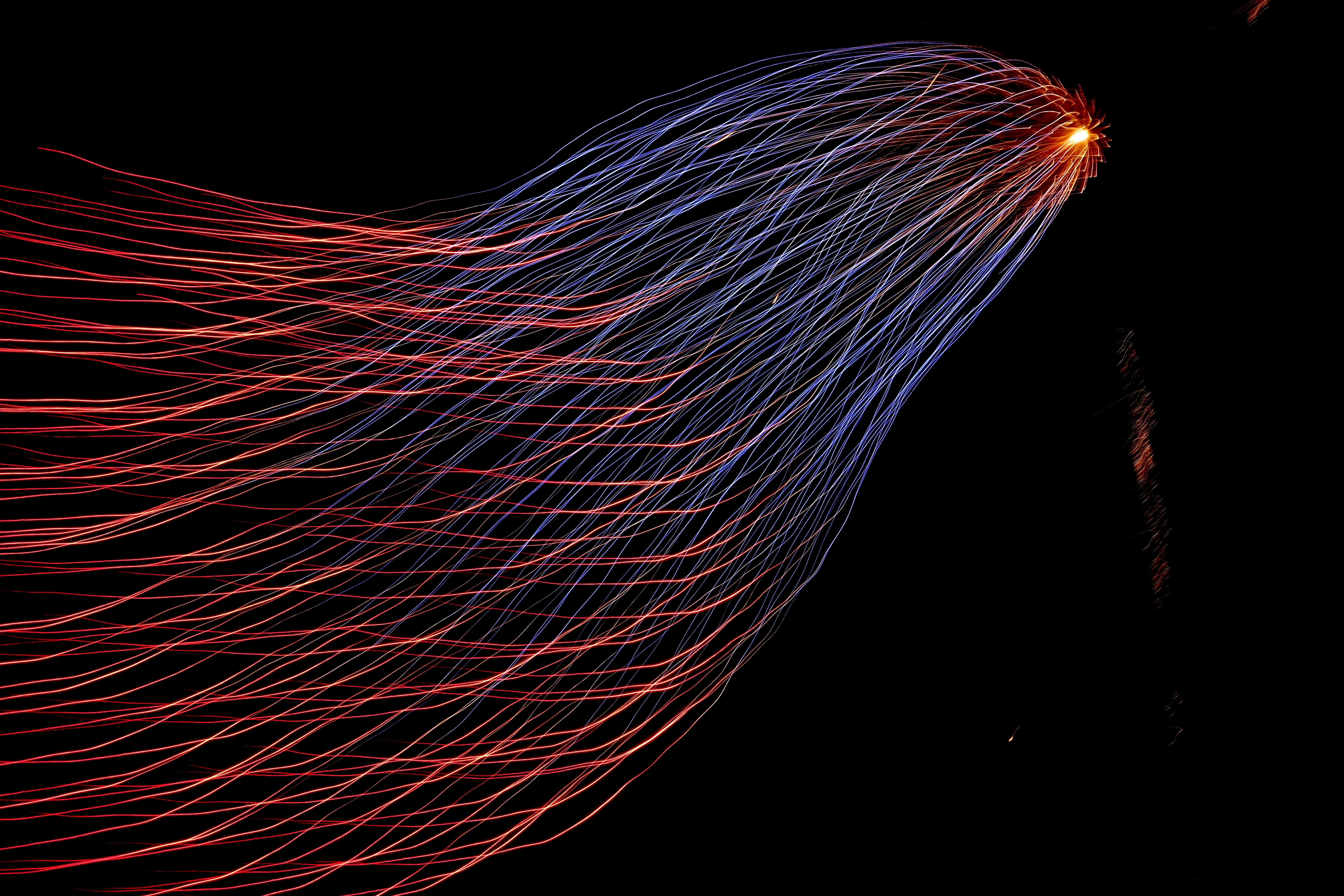Most security teams treat Managed Detection and Response (MDR) and Network Detection and Response (NDR) as separate, parallel security functions. MDR handles endpoint and multi-source threat detection, NDR focuses on network-based threats, and the two rarely talk to each other in any meaningful way.
This siloed approach misses the most powerful aspect of modern threat detection: the correlation and context that comes from combining network and multi-source security telemetry. The organizations seeing the biggest improvements in threat detection and response are those that integrate MDR and NDR into unified threat visibility programs.
Based on implementations with organizations running both MDR and NDR services, here’s how to integrate these capabilities for complete threat visibility that actually improves your security posture.
Why MDR and NDR Integration Matters
The Blind Spot Problem
MDR services excel at correlating security events across multiple data sources but often lack deep network visibility:
- Limited insight into lateral movement patterns
- Difficulty detecting network-based command and control communications
- Challenges identifying data exfiltration through encrypted channels
- Gap in understanding network topology and normal traffic patterns
NDR platforms provide excellent network threat detection but often lack broader organizational context:
- Network activity without understanding of user behavior and identity context
- Limited correlation with endpoint security events and system logs
- Difficulty prioritizing network threats based on business impact
- Challenges connecting network indicators to broader attack campaigns
The Integration Advantage
When properly integrated, MDR and NDR create comprehensive threat visibility:
- Attack timeline reconstruction combining network and endpoint evidence
- Lateral movement tracking from initial compromise through network propagation
- Data exfiltration detection correlating network patterns with data access events
- Command and control identification using both network patterns and endpoint indicators
Example scenario: An endpoint compromise detected by MDR reveals suspicious PowerShell execution. NDR data shows the compromised host immediately began scanning internal networks and establishing connections to external infrastructure. The integration provides complete attack visibility from initial compromise through network reconnaissance and command establishment.
Integration Architecture Approaches
Centralized SIEM Integration
Traditional approach: Feed both MDR and NDR data into a central SIEM platform for correlation.
Advantages:
- Single pane of glass for security operations
- Existing analyst familiarity with SIEM workflows
- Compliance reporting and audit trail capabilities
- Integration with existing security orchestration tools
Limitations:
- SIEM platforms often struggle with high-volume NDR data
- Complex rule development required for effective correlation
- Potential for increased false positives without careful tuning
- May not leverage specialized MDR and NDR analysis capabilities
API-Based Cross-Platform Integration
Modern approach: Direct integration between MDR and NDR platforms using APIs and data sharing protocols.
Advantages:
- Leverages specialized analysis capabilities of each platform
- Reduces data volume and processing overhead
- Enables real-time correlation and investigation workflows
- Maintains platform-specific optimization for different data types
Implementation considerations:
- Requires mature API capabilities from both MDR and NDR providers
- May need custom integration development and maintenance
- Security and access control complexity for cross-platform data sharing
- Potential for vendor lock-in with proprietary integration formats
Hybrid Integration Models
Practical approach: Combine centralized correlation with platform-specific integration.
Architecture components:
- High-level correlation in SIEM for compliance and reporting
- Real-time integration between MDR and NDR for active investigations
- Selective data sharing based on threat severity and investigation needs
- Cross-training for analysts on both MDR and NDR platforms
Implementation Strategy
Phase 1: Establish Data Flows
Before attempting correlation, ensure clean data flows between systems:
NDR to MDR integration:
- Network metadata and alert information flowing to MDR platform
- Network-based indicators of compromise shared with MDR analysis
- Network topology and asset information available to MDR analysts
- Network forensic data accessible during MDR incident investigations
MDR to NDR integration:
- Endpoint and identity-based indicators shared with NDR platform
- Incident context and business impact information provided to NDR analysis
- User behavior and identity information enriching network analysis
- Malware signatures and behavioral indicators enhancing network detection
Phase 2: Develop Correlation Use Cases
Start with high-impact, low-complexity correlation scenarios:
Lateral movement detection:
- MDR identifies compromised endpoint with unusual process execution
- NDR correlates with network scanning and connection attempts from same host
- Combined analysis provides complete attack timeline and affected systems
Data exfiltration identification:
- NDR detects unusual outbound data volumes from internal systems
- MDR correlates with file access events and user behavior analysis
- Integration identifies specific data accessed and exfiltration methods
Command and control analysis:
- NDR identifies suspicious network connections and communication patterns
- MDR correlates with endpoint artifacts and process behavior
- Combined analysis provides complete C2 infrastructure and malware analysis
Phase 3: Analyst Workflow Integration
Modify investigation processes to leverage both MDR and NDR capabilities:
Unified investigation playbooks:
- Standard procedures that incorporate both network and multi-source analysis
- Cross-platform evidence collection and correlation techniques
- Escalation procedures that engage appropriate expertise from both teams
- Documentation standards that capture insights from integrated analysis
Cross-training initiatives:
- MDR analysts trained on network analysis and NDR platform capabilities
- NDR analysts trained on endpoint and identity correlation techniques
- Joint investigation exercises using real-world scenarios
- Knowledge sharing processes between MDR and NDR teams
Technical Integration Considerations
Data Volume and Performance
NDR platforms generate high volumes of network metadata that can overwhelm traditional MDR correlation engines:
Selective integration strategies:
- Alert-based sharing: Only share NDR data when specific thresholds are crossed
- Investigation-triggered correlation: Pull NDR data during active MDR investigations
- Summary-based integration: Share network behavior summaries rather than raw metadata
- Prioritized data flows: Focus integration on critical network segments and high-risk assets
Real-Time vs. Historical Analysis
Different use cases require different integration approaches:
Real-time correlation needs:
- Active incident response and threat hunting
- Automated response and orchestration workflows
- High-priority alert triage and escalation
- Time-sensitive threat intelligence integration
Historical analysis requirements:
- Forensic investigation and timeline reconstruction
- Long-term threat campaign analysis
- Compliance reporting and audit requirements
- Baseline establishment and anomaly detection improvement
Security and Access Control
Cross-platform integration introduces security complexity:
Access control considerations:
- Role-based access to integrated data based on investigation needs
- Audit trails for cross-platform data access and analysis
- Data classification and handling requirements for integrated datasets
- Encryption and secure communication protocols for data sharing
Common Integration Challenges
Vendor Cooperation and Support
The problem: MDR and NDR vendors may not prioritize integration with competitor platforms.
Solutions:
- Negotiate integration requirements during vendor selection and contracting
- Leverage open standards and APIs rather than proprietary integration methods
- Consider vendors that offer both MDR and NDR capabilities
- Build internal expertise for custom integration development and maintenance
Alert Volume and False Positives
The problem: Integration can initially increase alert volumes and false positive rates.
Solutions:
- Start with high-confidence correlation rules and gradually expand sensitivity
- Implement tiered alerting with different response procedures for integrated vs. single-source alerts
- Regular tuning and optimization based on analyst feedback and investigation outcomes
- Investment in automation and orchestration to handle routine correlation tasks
Skills and Training Requirements
The problem: Effective integration requires analysts with both network and multi-source analysis expertise.
Solutions:
- Cross-training programs for existing MDR and NDR analysts
- Hiring analysts with broad security analysis backgrounds
- Gradual skill development with mentoring and knowledge sharing programs
- External training and certification programs for integrated threat analysis
Organizational Alignment
The problem: MDR and NDR services may be managed by different teams with different priorities.
Solutions:
- Joint governance structures with shared responsibility for integration success
- Common metrics and objectives that encourage collaboration
- Regular joint planning and review meetings between teams
- Executive sponsorship for integration initiatives that cross organizational boundaries
Measuring Integration Success
Operational Metrics
Track improvements in investigation efficiency and effectiveness:
- Mean time to detection for threats that span network and endpoint domains
- Investigation quality measured by completeness of attack timeline reconstruction
- False positive reduction through improved correlation and context
- Analyst satisfaction with integrated investigation capabilities
Security Outcomes
Measure actual security improvements from integration:
- Threat detection coverage across different attack vectors and techniques
- Incident response effectiveness for complex, multi-stage attacks
- Dwell time reduction for advanced persistent threats
- Attack disruption speed for ongoing threat campaigns
Business Value
Demonstrate integration value to organizational leadership:
- Risk reduction through improved threat visibility and response capabilities
- Operational efficiency from streamlined investigation and response processes
- Compliance benefits from comprehensive audit trails and reporting
- Cost optimization through reduced redundant tooling and improved analyst productivity
Advanced Integration Capabilities
Automated Response Orchestration
Mature integrations enable automated response across both network and endpoint domains:
- Coordinated containment actions based on integrated threat analysis
- Automated evidence collection from both network and endpoint sources
- Dynamic response adaptation based on real-time threat intelligence
- Workflow automation that leverages strengths of both MDR and NDR platforms
Threat Intelligence Integration
Enhanced threat intelligence through cross-platform correlation:
- Attribution analysis combining network and endpoint indicators
- Campaign tracking across multiple attack vectors and timeframes
- Threat actor behavior analysis using comprehensive telemetry
- Predictive analysis based on integrated threat landscape visibility
Business Context Integration
Connect security events to business impact:
- Asset criticality scoring based on network topology and business function
- Risk-based prioritization using both technical and business context
- Business process impact analysis for security incidents
- Strategic security planning based on integrated threat visibility
The Future of MDR-NDR Integration
Platform Convergence
Security platforms are evolving toward integrated MDR-NDR capabilities:
- Vendors offering unified platforms with both MDR and NDR functionality
- Cloud-native architectures designed for integrated analysis from the ground up
- AI and machine learning capabilities that leverage both network and multi-source data
- Simplified deployment and management for integrated threat detection
Standards and Interoperability
Industry standards are emerging for better security platform integration:
- Standardized APIs and data formats for security platform integration
- Open source tools and frameworks for cross-platform correlation
- Industry collaboration on integration best practices and reference architectures
- Regulatory and compliance frameworks that encourage integrated security approaches
Getting Started
Assessment and Planning
Before implementing integration, assess your current capabilities:
- Current MDR and NDR service capabilities and limitations
- Integration requirements based on threat landscape and business needs
- Technical architecture and platform capabilities for integration
- Organizational readiness for cross-functional security operations
Pilot Implementation
Start with limited scope and expand based on lessons learned:
- Select high-impact use cases for initial integration
- Identify technical and organizational challenges early
- Build analyst skills and confidence with integrated workflows
- Demonstrate value before expanding integration scope
Scaling and Optimization
Expand integration based on proven value and organizational maturity:
- Additional correlation use cases and investigation workflows
- Automation and orchestration capabilities
- Advanced analytics and threat intelligence integration
- Strategic security program optimization based on integrated insights
The Bottom Line
MDR and NDR integration isn’t just about connecting security tools – it’s about building comprehensive threat visibility that enables faster, more effective incident response. The organizations that successfully integrate these capabilities see significant improvements in threat detection coverage, investigation efficiency, and overall security posture.
Start with clear integration objectives, invest in the technical and organizational changes needed for success, and plan for gradual capability development over time. The complexity is worth it for the security improvements you’ll achieve.
What’s Next?
Ready to move beyond siloed MDR and NDR operations to build integrated threat visibility? Start by assessing your current capabilities and identifying the integration approach that best fits your technical architecture and organizational structure.
If you need help designing and implementing MDR-NDR integration that delivers measurable security improvements, let’s talk. We help organizations build practical, effective integrated security programs that leverage the strengths of multiple detection and response platforms.
The future of threat detection is integrated, not siloed – make sure your security program is ready.



